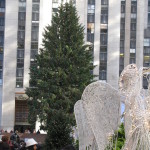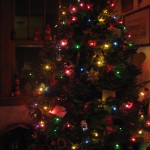by Winding Pathways | Dec 30, 2014 | Chickens
Chickens are colorful and entertaining transformers of kitchen scraps and garden waste into delicious organic food. What could be better than a small flock?
Chickens have been part of our lives for decades. We can’t imagine living without them. Today millions of American families are building coops and enjoying the benefits of flocks as small as a few hens.
Previously, ordinances banned chickens from many towns, but recent interest in local food has reached city hall, and antichicken ordinances are falling like autumn leaves. Many cities now allow backyard flocks in even urban areas, but often limit them to six hens and no noisy roosters.
Six hens will do these wonderful things:
Lay three or four fresh and delicious eggs every day.
- Quickly repurpose food scraps and weeds into eggs.
- Provide a wonderful opportunity for children to learn responsibility by caring for chicken. And they’ll learn where food really comes from.
- Add color and life to the back yard.
Chickens are easy to raise and care for but need attention 365 days a year. Anyone who has kept any domestic animal can easily learn to care for a small flock. They just need these things:
- A coop to protect them from the wind, rain, raccoons and other predators. Chickens only need four square feet per hen, so a backyard coop can be tiny and can be purchased ready-made, is easily built with simple carpentry skills and tools, or crafted inside an existing garage or shed.
- An optional but helpful outdoor run that gives the birds fresh air, sunshine, and plenty of plants and insects to eat.
- Someone to check on them daily to harvest eggs, fill feeders and waterers, close the door at night to keep nocturnal predators at bay and open it in the morning.
How to Get Started
The first step is to either call your town’s city clerk or check the municipal website to see if keeping chickens is legal and, if so, what restrictions are in place. Assuming that your city has endorsed backyard chickens here is what you can do:
- Read a few how to books that help beginners learn the basics. There’s also plenty of information on the Internet.
- Scan websites of hatcheries for information on chicken care and breeds. Just Google chicken hatcheries and a screen of websites appears. We’ve ordered chicks from Murray McMurray and Hoover’s Hatcheries. Both have been part of the Iowa business scene for decades. McMurray’s on line and paper catalog is a gem of information and they sell dozens of breeds of chickens. Hoover is a down home hatchery that sells fewer breeds but of top notch quality.
- Check with your local nature center or county extension office to see if a basic chicken care workshop will be held in your area. Take it in. They may be able to put you in touch with nearby families who have chickens.
- For a list of nature centers scan the website of the Association of Nature Center Administrators.
- Subscribe to on line chicken care blogs. Two good ones are Scoop From the Coop and Community Chickens.
- Read more on chicken care in future Winding Pathways Blog.
- Then, have fun with your chickens.
by Winding Pathways | Dec 29, 2014 | Mammals, Nature
Every winter the residents of urbanized areas are astonished to spot massively antlered buck deer in broad daylight. These large animals haven’t just moved to town. They’ve been here all along. Unlike does and fawns, bucks are exceedingly secretive and are rarely spotted as they hide in tiny urban wooded areas and even prairies. However, during the main mating season in November and a secondary one in December bucks lose their caution and may be spotted in even the most urban areas. Also, all deer are more visible in winter than summer because leaves have dropped and snow covers the ground.
Sometimes an area’s largest bucks reside in towns for a number of reasons. Often cities have nutritious food interspersed with woods and ravines that provide secluded hiding places. Hunters usually prefer to shoot large bucks, and in rural areas these often become steaks and chops before they fully mature. Most city bucks are well nourished and, provided they survive highway collisions, are more likely to live longer and grow bigger antlers than their rural cousins.Well-nourished five and six year old bucks normally have the largest antlers but beyond these years their antlers decline as part of the aging process.
Today many cities allow bow hunting to trim deer damage to vegetation and reduce vehicle collisions. Usually hunters are required to shoot does, which allows urban bucks grow old and large.
Every year, usually in March or April but sometimes as early as December, bucks shed their antlers. By late April they begin growing new ones. So, the very large antlerless deer spotted in late winter could be a buck. Hunting shed antlers in late winter is becoming a popular activity.
Although big bucks live near people all year, winter is a great season to observe them.
by Winding Pathways | Dec 16, 2014 | Nature, Travel/Columns, Trees/Shrubs

Rockefeller Center is the site of an amazing Christmas Tree that overlooks the skating rink in NYC.
Although increasing numbers of Americans are opting for an artificial Christmas tree, millions enjoy bringing a real tree into their homes for the festive season. As the fashions wax and wane, we see an upsurge in families eagerly venturing out to tree farms to select and cut a real tree. Many species of evergreens are used for Christmas trees but the following species are by far the most common:
EASTERN WHITE PINE: This is the great pine of New England and the upper Lake States that was logged to near oblivion in the late 1800s. It can grow to over 200 feet tall. Thankfully many survived and today the white pines are often used for Christmas Trees in the East. The natural range of the Eastern White Pine is from Southern Canada down to the Mid-Atlantic states and west to about Iowa. It has been widely planted outside its native range and a similar species, the Western White Pine, lives in northern Idaho and nearby Montana and Washington. White pines grow relatively rapidly and have five long soft needles in a bunch.
SCOTS (or Scotch) PINE: This fast growing but usually short lived tree has become increasingly popular as a Christmas tree. They are usually cut when only five or six feet tall, making them ideal for smaller houses and apartments. The species is native to Europe and is the most widespread pine in the world. It has several subspecies. Scots pine has two short twisted and somewhat stiff needles per bundle. On large trees the upper trunk bark is sometimes bright orange.

The soft glow of lights on a cold winter’s night warms our hearts.
BALSAM AND FRASER FIRS: This traditional Eastern tree is native to the cool moist north woods. Widespread in upper New England and Eastern Canada its range extends south along the Appalachian Mountains and west to Iowa. One of the slower growing conifers it has the wonderful evergreen fragrance that many people associate with Christmas. A similar tree, called the Fraser Fir, looks almost the same but the underside of its needles is silvery. It is native to the southern Appalachians. Both the Balsam and Fraser Firs have very short needles. These are by far favored Christmas Trees in the North East and along the East Coast.
OTHERS: Ponderosa pines and Douglas Firs are native to many western states and are often used for Christmas trees. A smattering of other pine, spruce, and fir species are also occasionally used.
In the East most people purchase a tree, but out west it’s more common for a family to make an outing to cut a wild tree. Occasionally, a family will bring a cedar, arbor vitae, or even a dried tumbleweed home to decorate as a Christmas “tree”.


